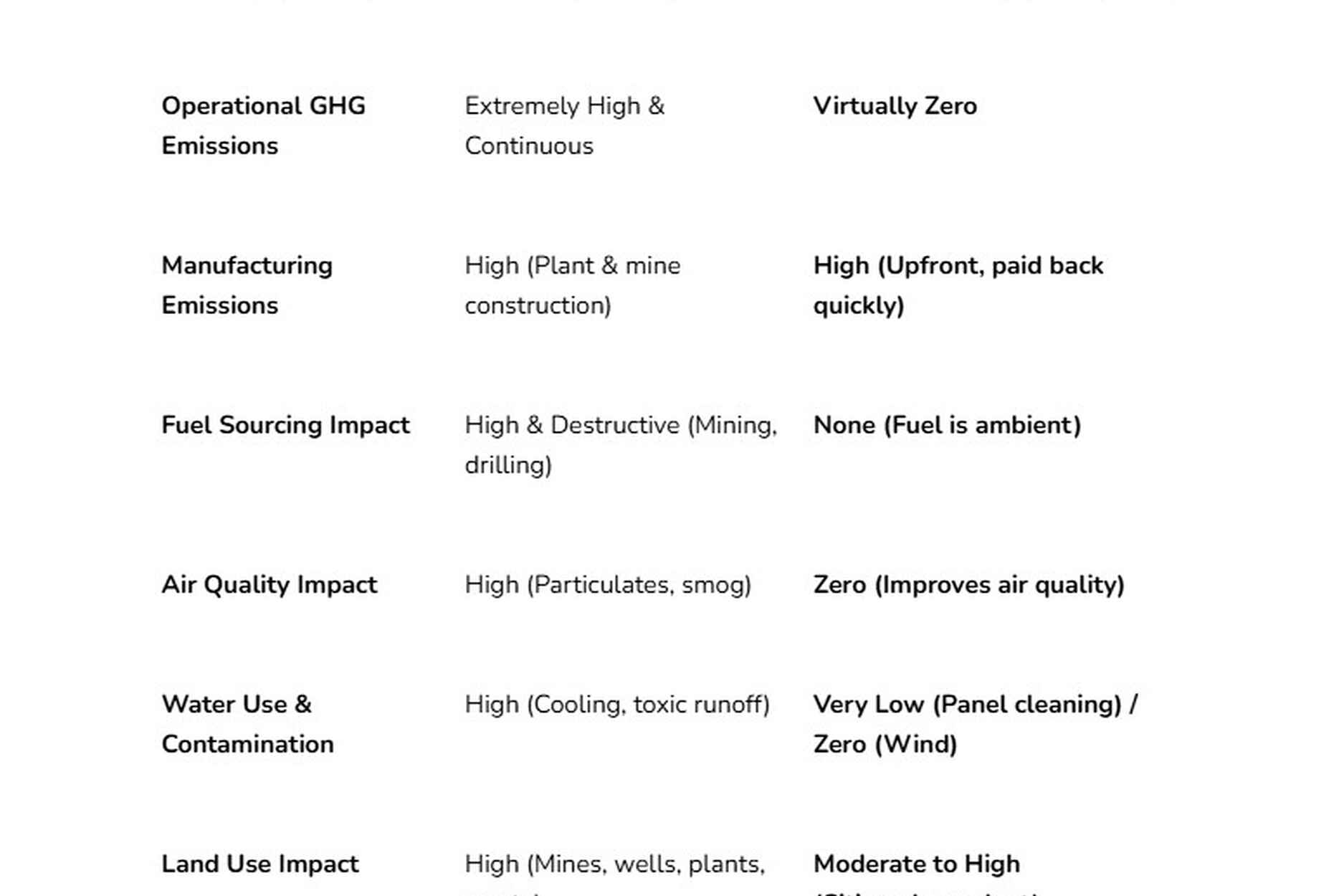As international developers of utility-scale renewable energy projects, we are tasked with providing a precise answer to this question every day. The common understanding is that renewable energy is simply "clean," but the technical reality is more nuanced.
The definitive answer is that the primary environmental impact of renewable energy is overwhelmingly positive, defined by the near-total elimination of greenhouse gas emissions and pollutants during operation.
However, a complete, professional analysis, the kind we conduct for our own projects, does not just look at operation. To answer this question responsibly, we must assess the entire Lifecycle Analysis of a technology, from manufacturing to operation and eventual decommissioning.
The Primary Positive Impact: Operational Decarbonization
The fundamental environmental benefit of renewables stems from their operational model. Unlike fossil fuel plants that consume and combust a finite fuel, renewable technologies like photovoltaic (PV) panels and wind turbines are converters. They harness an ambient "flow" of energy, sunlight or wind, without a chemical reaction.
The most significant impact is the displacement of fossil fuels. While a natural gas or coal plant continuously emits high volumes of carbon dioxide (CO2), methane (CH4), sulfur oxides (SOx), and nitrogen oxides (NOx) for every second it operates, a solar farm or wind installation produces virtually zero of these emissions. This operational decarbonization is the single most powerful tool for mitigating climate change.
Improved Air and Water Quality
The elimination of combustion has immediate, positive environmental co-benefits. By displacing fossil fuels, renewables directly reduce the particulate matter (PM2.5) and smog-forming compounds that cause respiratory disease. Furthermore, they mitigate water-related impacts. Conventional power plants require massive volumes of water for cooling (thermal pollution), while fossil fuel extraction carries the constant risk of chemical leaching and oil spills, which contaminate groundwater and marine ecosystems.
An authoritative analysis must also include the environmental costs, or "trade-offs," associated with a technology's full lifecycle. From our perspective as developers, these are not "negatives" that invalidate the technology, but rather known engineering and supply chain challenges to be managed.
Renewable technologies are manufactured items. The production of solar panels (mining quartz for silicon, processing) and wind turbines (producing steel, fiberglass, and rare-earth elements for magnets) is energy-intensive. This creates an upfront carbon cost.
However, this cost must be put in context. We analyze this through an "Energy Payback Period." A typical solar panel "pays back" the energy used to create it in approximately 1-3 years. For the remaining 25+ years of its operational life, it is a net-zero-emission asset.
Utility-scale solar and wind projects require a significant land footprint. This is a critical factor in our project planning. The potential impact involves habitat disruption or competition with agriculture.
We mitigate this through two primary strategies. First, strategic siting, which involves prioritizing low-impact areas such as arid or semi-arid land, former industrial sites ("brownfields"), or other areas with low ecological value. Second, co-location models like agrivoltaics which integrates PV arrays with active agriculture, creating a dual-use system that maintains land productivity.
Specific technologies have specific impacts. Large-scale hydroelectric dams, for example, can fundamentally alter river ecosystems and block fish migration (though modern "run-of-river" designs are far less disruptive).
For wind turbines, the most-cited impact is avian (bird) and bat mortality. This is a serious consideration that we address through advanced engineering and siting. By conducting rigorous environmental impact assessments, avoiding key migratory pathways, and increasingly using radar-based systems to pause turbines when large flocks approach, this impact can be significantly minimized.

[IMAGE: A simple graph comparing the total lifecycle emissions of a coal plant versus a solar farm over 30 years, showing the massive, accumulating emissions of coal vs the one-time upfront "debt" of solar.]
This analysis shows that the impacts of renewables are primarily upfront and manageable, while the impacts of fossil fuels are continuous, cumulative, and existential.
Our Expert Conclusion
The impact of renewable energy on the environment is decisively positive. It is the only viable, scalable method for achieving operational decarbonization.The known environmental trade-offs related to manufacturing, materials, and land use are not equivalent hazards. They are solvable engineering challenges that we, as developers, manage through strategic siting, technological innovation, and comprehensive lifecycle planning. The challenge is not if renewables are better, but how we deploy them with maximum efficiency and minimal impact.
Resources
U.S. Environmental Protection Agency (EPA) - Renewable Energy: https://www.epa.gov/environmental-topics/green-energyInternational Energy Agency (IEA) - Renewables: https://www.iea.org/energy-topics/renewablesNational Renewable Energy Laboratory (NREL) - Lifecycle Assessments: https://www.nrel.gov/analysis/life-cycle-assessment.html
